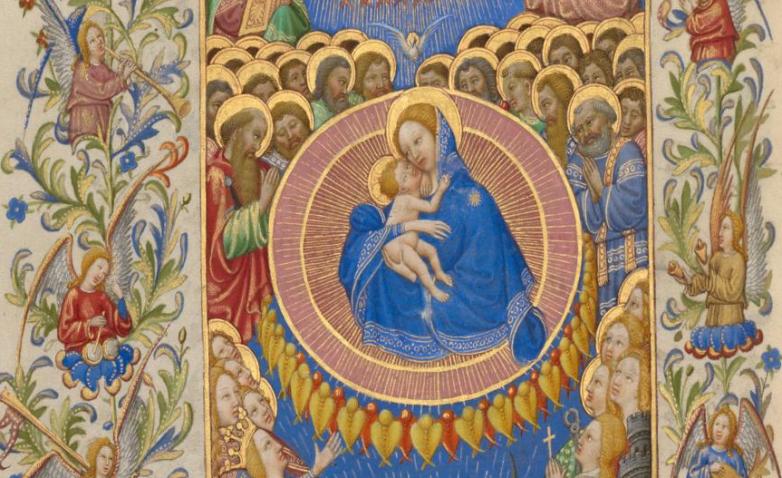A medieval timepiece called a volvelle was used to calculate the positions of the sun, moon, and stars of the zodiac at various times during the year. By rotating layered parchment discs, one could indicate the phases of the moon, the number of days in each month, and the sign that governs each hour of the day. With this information calendars were made as a guide to days of religious observance and activities that suit the season, such as riding in springtime and preparing wine in the summer.
Students of medicine carefully observed the relationship between the celestial luminaries and the twelve signs of the zodiac and divined the effect on one’s physical well-being. Medieval doctors developed the ancient technique of bloodletting, or withdrawing blood, a preventative and curative practice intended to balance bodily fluids, or humors, to keep an individual in good health. They made diagrams to show which of the major bodily veins should be selected for bloodletting based on the appropriate phase of the moon, time of year, or auspicious astral portents. Many people—astrologers, rulers, priests, and individuals of all classes—believed that each zodiac symbol had a power over a part of the body (Aries governed the head and Pisces the feet, for instance).
In writings about the celestial realm of heaven, theologians discussed the nature of angels, saints, and ultimately God. Peoples of various religions believed that the radiant sun, full moon, twinkling stars, and distant planets held great power over their lives, the seasons, and daily activities, or that God, spirits, demonic forces, and deceased souls could traverse the veil between heaven and earth. The belief in angels, demons, and spirits in turn inspired wondrous works of art, especially on the pages of illuminated manuscripts.
“The exhibition demonstrates the close relationship between astronomy—the study of the physics of cosmic phenomena—and astrology, which seeks to correlate these celestial events with happenings on earth,” said Bryan C. Keene, associate curator of manuscripts. “Although we might now separate faith from science—or the sciences from the humanities and art—these categories were more closely aligned in the Middle Ages, as seen on the pages of illuminated manuscripts.”
The Wondrous Cosmos in Medieval Manuscripts will be on view April 30-July 28, 2019, at the J. Paul Getty Museum at the Getty Center. Related programming will include:
- Drinking in the Past: Wine and Astrology from the Middle Ages to Today, a lecture and tasting program with curator Bryan C. Keene and certified sommelier Mark Mark Keene that explores the relationship between the history of wine and astrology, on Saturday, June 1 and Sunday, June 2 (tickets $65 including appetizers and wine tasting).
- Creation and Cosmos in the Twelfth Century: Hildegard’s Cosmic Egg, on Sunday, June 23. Join Margot Fassler, professor of theology at the University of Notre Dame, on a journey through the stages of creation according to the Book of Genesis and a 12th-century, egg-shaped model of the universe as envisioned by the German nun, visionary, and scientist Hildegard of Bingen (1098-1179).
Additional information on public programs can be found at getty.edu/360.

















